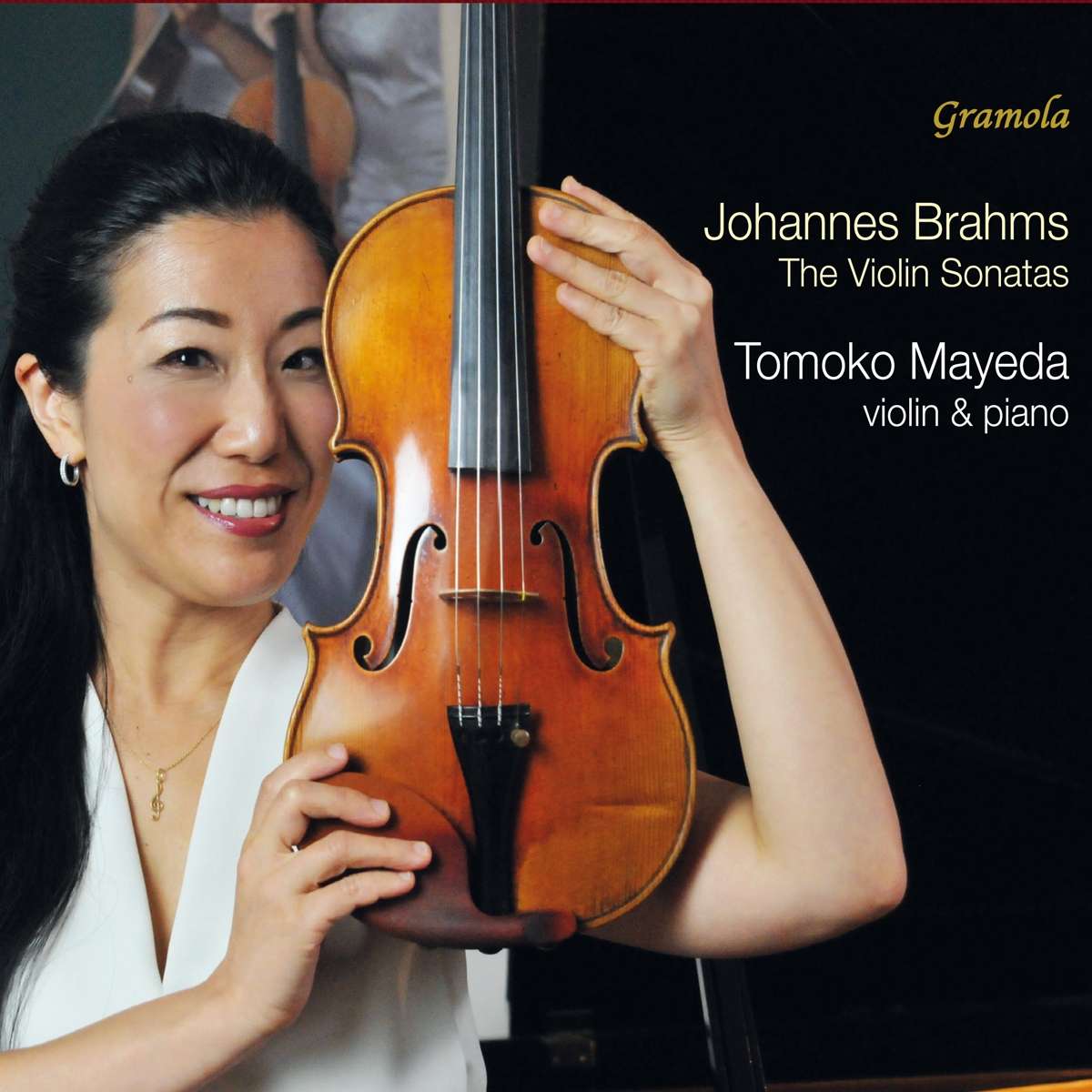In der Wissenschaft wird hin und wieder in speziellen Kontexten die Frage gestellt, ob man alles machen müsse, was technisch möglich sei. In diesem Fall ist die Frage, ob jemand, der sowohl Klavier wie auch Geige spielen kann, zuerst den Klavierpart und zwei Monate später dazu die Violinstimme für Duosonaten einspielen sollte, sozusagen als Einhandspielerin, dem entsprechenden Begriff beim Segeln entlehnt?
Nach Sonaten von Mozart hat Mayeda sich nun Brahms vorgenommen. Auf das erste Hören wird eine ansprechende Interpretation der Sonaten geboten. An einigen Stellen mag man etwas viel romantisches Gepräge eines intensiven Geigenspiels vernehmen, das ein wenig kräftig aufgetragen wurde. Aber alles in allem muss man nichts bemängeln.
Viel erstaunlicher ist, dass ein Interpret beim Einspielen nur der Klavierstimme die Initiative und das Feuer aufbringen kann, da er vom Partner nicht herausgefordert wird. Und später, dass man die Geigenstimme zum Vorgegebenen platzieren kann und trotzdem nicht durch die reaktionsfeindliche Aufzeichnung so eingeengt ist, dass man nicht mehr frei und intensiv agieren kann.
Tomoko Mayeda hat diese Prozedur auf sich genommen. Um sich oder uns zu beweisen, dass sie es kann? Ja, kann sie. Aber ob unter diesen Umständen eine mehr als ordentliche Leistung erreicht werden kann, wage ich zu bezweifeln. Jedenfalls klingen die Sonaten für mich eher wohldosiert als feurig und spontan. Das ist alles gut aufeinander abgestimmt. Aber mich begeistert es auch nicht. Warum spielt sie dann nicht Solowerke für das eine und das andere Instrument auf einem Album ein, wenn sie beide Begabungen zeigen will?
In academia, the question is occasionally asked in special contexts as to whether everything that is technically possible should be done. In this case, the question is whether someone who can play both piano and violin should first play the piano part and then, two months later, the violin part for duo sonatas, as a one-handed player, so to speak, borrowing the corresponding term from sailing?
After sonatas by Mozart, Mayeda has now set her sights on Brahms. At first hearing, an appealing interpretation of the sonatas is offered. In some places you may hear a little too much romanticism in the intense violin playing, which has been applied a little heavily. But all in all, there is nothing to criticize.
What is much more astonishing is that a performer can muster the initiative and fire when only playing the piano part, as he is not challenged by his partner. And later, that you can place the violin part to the given part and still not be so restricted by the recording, which is hostile to reaction, that you can no longer act freely and intensively.
Tomoko Mayeda has taken this procedure upon herself. To prove to herself or to us that she can do it? Yes, she can. But whether a better performance can be achieved under these circumstances, I dare to doubt. In any case, the sonatas sound well-dosed to me rather than fiery and spontaneous. It’s all well-coordinated. But it doesn’t excite me either. So why doesn’t she record solo works for one and the other instrument on one album if she wants to showcase both talents?


















